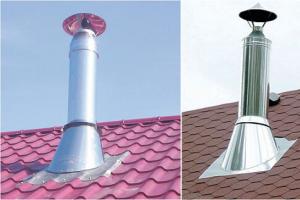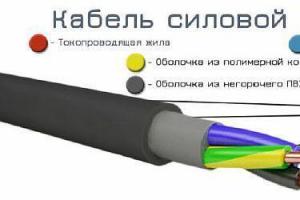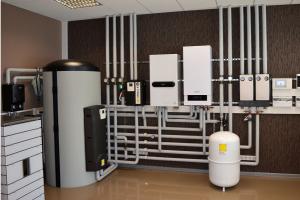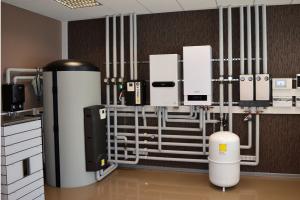When planning to heat a private home, it is necessary to calculate the cost of heating with main gas. During the operation of the equipment, this is much easier to do; you just need to track the readings of the measuring device at the beginning and end of the month. It is equally important to know energy consumption at the design stage. This will help you choose the right devices for the system and determine the quality of the media.
Large areas require considerable costs to ensure comfortable living in a private home. First of all, this concerns heating, so you need to optimize the operation of the heating system as much as possible and find out the resource consumption for servicing the premises.
Calculations primarily depend on the area of the building. Another important indicator is power. According to the standards, it is determined for each room during the most severe frosts for five days. In reality, much less energy is used, since air temperatures can fluctuate within reasonable limits throughout the season.
1. For average consumption, you can take a value of 50 W/m2 for 60 minutes. This means that for heating an area of 100 m2 it will be 5,000 W, for heating a private house of 200 m2 - 10,000 W.
2. You can use the formula: R=V/(qHxK), where R is the volume of gas in m3 per hour, V is the specified thermal power, qH is the lowest combustion rate (10 kW/m3), K is the boiler efficiency.
3. As a result, the consumption of natural gas for a private house of 100 m2 is 5/(10x0.9) = 0.55 m3 per hour, respectively, for heating twice as large an area the figure will be 1.11 m3 per 60 minutes.

4. To find out the daily consumption, multiply the resulting value by 24: 0.55x24=13.2 m3. The parameter for 30 days is determined in the same way - 13.2x30 = 396 m3.
5. If you need to calculate consumption for 1 m2, the monthly figure is divided by quadrature, resulting in gas consumption of 3.96 m3. Since the cold season can last differently in each region, it is recommended to calculate the parameter over 7 months, which will give an average value at the design stage.
To convert into monetary equivalent, you need to multiply the price values for 1 kW/h and the seasonal consumption index. This will give an approximate figure for heating costs for the entire cold period.

Liquefied gas
Many boilers are manufactured in such a way that the same burner can be used when changing fuel. Therefore, some owners choose methane and propane-butane for heating. This is a substance with a low density. During the heating process, energy is released and natural cooling occurs under the influence of pressure. Consumption depends on the equipment. Autonomous supply includes the following elements:
- A vessel or cylinder containing a mixture of butane, methane, propane - a gas holder.
- Control devices.
- A communications system through which fuel moves and is distributed inside a private home.
- Sensors for monitoring temperature.
- Shut-off valves.
- Automatic adjustment devices.
The gas holder must be located at least 10 meters from the boiler room. When filling a cylinder of 10 cubic meters, to service a building of 100 m2, you will need equipment with a power of 20 kW. Under such conditions, it is enough to refill no more than 2 times a year. To calculate the approximate gas consumption, you need to insert the value for the liquefied resource into the formula R=V/(qHxK), and the calculations are carried out in kg, which are then converted to liters. With a calorific value of 13 kW/kg or 50 mJ/kg, the following value is obtained for a house of 100 m2: 5/(13x0.9)=0.427 kg/hour.
Since a liter of propane-butane weighs 0.55 kg, the formula is 0.427/0.55=0.77 liters of liquefied fuel in 60 minutes, or 0.77x24=18 liters in 24 hours and 540 liters in 30 days. Considering that one container contains about 40 liters of resource, the consumption during the month will be 540/40 = 13.5 cylinders of gas.

How to reduce resource consumption?
In order to reduce the cost of heating a room, home owners use various measures. First of all, it is necessary to check the quality of window and door openings. If there are gaps, heat will escape from the rooms, resulting in more energy consumption.
Also one of the weak points is the roof. Hot air rises and mixes with cold masses, increasing consumption in winter. A rational and inexpensive option would be to provide protection from the cold on the roof using rolls of mineral wool, which are laid between the rafters, without the need for additional fixation. It is important to insulate the walls inside and outside the building. For these purposes, there are a huge number of materials with excellent properties. For example, expanded polystyrene is considered one of the best insulators, which lends itself well to finishing; it is also used in the manufacture of siding.
When installing heating equipment in a country house, it is necessary to calculate the optimal power of the boiler and the system operating on natural or forced circulation. Sensors and thermostats control the temperature depending on climatic conditions. Programming will ensure timely activation and deactivation when necessary. A hydraulic arrow for each device with sensors for a single room will automatically determine when it is necessary to start heating the area. The batteries are equipped with thermal heads, and the walls behind them are covered with a foil membrane so that the energy is reflected into the room and does not go to waste. With heated floors, the carrier temperature reaches only 50°C, which is also a determining factor in savings.

The use of alternative installations will help reduce gas consumption. These are solar systems and equipment powered by wind. It is considered most effective to use several options at the same time.
The cost of heating a house with gas can be calculated using a certain formula. It is better to carry out calculations at the building design stage, this will help to determine the profitability and feasibility of consumption. It is also important to take into account the number of people living, the efficiency of the boiler and the possibility of using additional alternative heating systems. These measures will allow you to save money and significantly reduce costs.
When designing a gas heating system, all factors affecting gas consumption are taken into account: the size of the housing, the number of floors, insulation of the main structures, power and how many people live in the house. Heating a private home with gas is beneficial from an economic point of view for several reasons.
Benefits of use
Firstly, it is characterized by high efficiency of the combustion process due to its low sulfur content. This also allows you to save resources for cleaning the boiler. Secondly, it is easy to reduce heat losses and gas consumption with the help of good thermal insulation. Thirdly, gas is also an environmentally friendly material, since when it is burned, a very small amount of harmful substances is released into the atmosphere.
When using gas as a fuel for heating, the boiler walls do not suffer from corrosion, which increases the service life of the equipment. It is convenient to use liquefied gas: it has better quality and is delivered in cylinders to places where there are no highways, making life easier for thousands of people.
Complexity and cost features
Gas consumption for heating a house is directly proportional to the living area of the room. You can calculate the consumption in kW/hours by multiplying the boiler power by the number of hours/day and day/month. 
However, this mode is practically not used for everyday life. The real indicator for calculating gas consumption is the average monthly kW/hour. To do this, the maximum monthly consumption for heating a house is divided in half. If this is a residential building, then the calculation is made based on the length of the heating season.
Algorithm
Data for calculating boiler power are based on the ratio of 1 kW/h per room of 10 m². Thus, to heat a house with an area of 100 m², you will need to divide it by 10: i.e. the required power will be 10 kW/h.
How much gas is consumed for a different size house is calculated according to the same principle, i.e. the area is divided by 10. For example, for an area of 200 m2, the calculation will look like this: 200 m2/10, i.e. 20 kW/hour will be spent on heating this room.

Adjustment for days
Monthly gas consumption is calculated by multiplying the daily requirement of a house of 100 m2 by the number of days in a month: 10 kW/h * 24 hours * 30 days (total - 7200 kW). Since the system usually operates in medium mode, the maximum flow rate is divided in half, and the result is 3600 kW.
Adjustment for the season
If the duration of the heating season is 7 months, then the calculation of gas costs is obtained by multiplying 3600 kW by 7. i.e. heating a private house with an area of 100 m² will cost 25,200 kW. Heating a house of 200 m2 will require 50,400 kW, respectively.

If the heating season is shorter or longer than 7 months, then gas consumption is calculated accordingly by multiplying by the period required by the user.
Knowing the tariff for 1 kW/hour, it is very easy to calculate the monetary equivalent of consumption. The cost of 1 kW/hour may vary depending on the region.
Nuances and additional factors
There are special programs for calculating fuel consumption that will greatly facilitate the work. For apartment buildings that are connected to the main gas supply, consumption standards are established.
Despite the available methods, for a more accurate result it is still recommended to contact specialists. After all, calculating the need for a gas boiler takes into account the use of fuel only for heating the house.
But you also need to remember about the presence of a gas stove and a water heating system, which will increase your costs. The number of people living in a house or apartment is also important for the consumption indicator. All these factors will be taken into account by specialists.
In addition, our experts will help you minimize gas consumption through the use of special technologies.
Features of autonomy
If there is no gas main near a residential or country house, then an autonomous heating system that runs on a mixture of propane and butane is an excellent solution.

The cost of purchasing and installing autonomous heating equipment that uses a mixture of propane and butane as fuel is lower than the cost of connecting to a central gas main.
pros
Such a system reduces the risk of emergency shutdown of pipelines and the threat of a sudden drop in pressure. Autonomous heating has reservoirs that maintain the ability to consume gas for heating for some time.
In the event of a power outage or fuel supply, the safety system with which all boilers are equipped blocks the solenoid valve. After gas supply is restored, you need to start it again.
Tricks for saving
Reducing gas consumption for heating can be achieved in the following ways:
- installation of an automatic control system;
- installation of gas sensors, which will also help to detect leaks in time;
- insulation of the house: sheathing of walls, roofs;
- compliance with the temperature regime in the room with cylinders not lower than 25°C;
- purchasing cylinders from a trusted supplier, since poor fuel quality also reduces efficiency.
These measures make it possible to reduce gas consumption by up to 40%, which makes it possible to use 1 cylinder for 3-4 days.
Of course, before building a house, it makes sense to think about the parameters that affect gas consumption described in the article. Together, they can save your budget quite a bit. Particular attention should be paid to the choice of boiler. Of course, I heard about the calculation formula, but I didn’t delve into the essence and never calculated using it. I thought that everything was very complicated there. But it turns out that everything is not so scary and anyone can independently calculate gas consumption.
19.2 liters per day. A 50l cylinder is enough for 2 days, the price today to fill a cylinder is approximately 900 rubles, multiply by 15 = 13,500 rubles per month for heating the house. Of course, this is cheaper than electricity, since it will generate at least 3,500 kW per month * 5.38 rubles/1 kW = 18,800 rubles.
We still use coal the old fashioned way; it is 2 times cheaper than gas and, accordingly, 4 times cheaper than electricity. Of course, heating with wood is even cheaper, but compared to coal, the difference is not very big. But there is another aspect that has a lot to do with types of fuel: ease of use and the conditions of the heated object.
I will say for sure that heating even a private house or apartment with gas is much more profitable than using coal. The main thing is to install the correct gas equipment. When choosing, I was guided by the following scheme, to put it simply: to heat ten square meters of living space, one kilowatt of thermal power generated by the heat generator will be required. But we must not forget to take into account what the house is built from (the material can be heat-conducting), and take into account the heat loss of the residential building. Of course, we must not forget that heating in the south will require less power than heating in the north.
Here I was able to find all the necessary calculations, and there was no need to waste time obtaining additional information. It turned out that everything was not so difficult. In the case of autonomous gas heating, the results in terms of future financial costs were not too great. The example given in the article also helped to further orientate myself in the correctness of my calculations. All that remains is to decide on the choice of a gas boiler and other special equipment. The gas holder in the picture, for a private house, is partially hidden underground and looks quite good. Especially if it is not placed in the most visible place.
and in my opinion it is better to invite a specialist who has significant experience in this matter. Then, if you don’t have experience in this, you can make mistakes and then redoing it won’t be so easy.
Obviously, the smaller the house, the less resources are needed to heat it. I live alone in a small private house, so very little gas is used here to heat the house.
I learned about this form of calculation relatively recently. It is noteworthy that it really helps to effectively and accurately calculate gas consumption for heating, taking into account all the important components that make up the design of the house. This way I was able to calculate the gas consumption in my house, which was almost built, and now I pay about the same amount that I received from the calculations. By the way, in order to use the specified calculation formula, you just need to know several indicators that are freely available. So this method of calculation works wonderfully.
Who has real experience of heating a house with propane in the Rostov region. Let me explain, there is a house of 98 sq.m. well insulated (gas block on the side + brick) in winter, even without heating, at an outside temperature of -10, the water inside did not freeze, normal windows, doors, floor on the ground were properly made (thermal insulation), heating first floor, heated floor on top, tiles, second floor radiators, there is an attic floor The insulation is also excellent (mini-stove), connecting the main gas costs 350,000, but we need to live there now. We are thinking of buying a good boiler (for example, Rinnai) and installing six cylinders with a switch, we have delivery, a cylinder for exchange is approximately 700-750 rubles. In short, if you have experience, please tell me which boiler is best to use and what is the actual consumption in our conditions?
It is unlikely that anyone doubts that heating a house with gas, not counting electrical systems, is the most convenient and cleanest compared to other options. If everything is done correctly, efficiency (read profitability) will also be at its best when, of course, we are talking about connecting to the main networks, and not about propane cylinders. But in any case, in order to make a final decision, all developers want to know what the real gas consumption for heating the house will be, and whether it is possible to optimize energy costs. It's not hard to find out.
How to calculate gas needs for the heating season
Nominal performance of the equipment
The first thing to do is to determine what power the boiler needs to be installed. It is important to us that gas heating in the house is guaranteed to provide a comfortable temperature in the premises even on the coldest days of winter. The most reliable way would be to carry out engineering surveys (if the building is already in use), or calculate the heat losses to be replenished (if construction is underway)
Gas boiler in the heating system of a private house
There is a simpler option, you can use the well-known rule, which states that for every square meter of home area there should be about 100 watts of heat generator power, that is, 1 kW per 10 m2. It doesn’t matter whether gas heating is being considered for an apartment building or a small private cottage, this formula applies to well-insulated buildings. It’s convenient for the average person to think in square meters, but cubic capacity is more important, so a simplified calculation is only suitable if the height of the ceilings in the rooms does not exceed 2.7 meters.
Important! If the boiler will also heat water for the DHW circuit, then it is worth providing a thermal performance reserve of 2-3 kilowatts.
So, as an example: for a house of 200 square meters you need to purchase a heating device with a power of at least 20 kW.
How much gas does the boiler burn for every 1000 watts of heat?
Heating devices on the market may differ significantly in technical characteristics, in particular in energy efficiency. However, there are average indicators that are quite suitable for calculations. Thus, for every kilowatt of thermal energy generated, modern gas boilers for heating a house use about 0.112 cubic meters of natural gas per hour.

Using a gas holder, you can stock up on liquefied gas for the whole season
To calculate consumption when heating a house with liquefied gas, you must proceed from the following data:
- efficiency factor of the heat generator,
- calorific value of the gas (the composition and quality of the mixture may vary greatly from different suppliers).
Depending on these conditions, generating one kilowatt of heat may require from 0.085 to 0.12 kilograms of liquefied propane per hour. On average, a flow rate of 0.1 kg/h is substituted into the formulas.
How many days a year will gas heating work at home?
The duration of the heating season depends on the climatic characteristics of the region. According to the tables of SNiP 23-01-99 “Building Climatology”, thermal engineering calculations take into account: air temperature (peak, average daily, in the coldest five-day period, amplitude), the prevailing direction and speed of winds, amount of precipitation, relative humidity.
Depending on the specific region, the heating season lasts on average in Russia from 210 to 250 days. Approximately from October to April inclusive. If autonomous heating is implemented in the home, then it is important what temperature in the premises the residents of the house consider comfortable.

This is approximately how temperatures are distributed in Moscow and the region. It is interesting that absolute minimums were recorded at the end of the century before last and the beginning of the last century, and in the 21st century record highs are increasingly being recorded
Total energy volume for the heating season
So, we calculate all the necessary gas for a house of 200 square meters (according to the floor area of the heated premises). A 20 kilowatt boiler will burn 2.24 cubic meters of gas per hour. 53.76 m 3 of fuel (24 X 2.24) will be required per day. For a heating season of 7 months - 11289.6 (210 X 53.76).
Don’t be in a hurry to get scared; there is no point in operating a gas boiler for heating a house at full power for seven or eight months. There are only a few dozen such cold days; the rest of the time the consumption is much less. Taking into account the controlled decrease in the productivity of the heat generator, in central Russia the calculated seasonal gas consumption is divided in half. That is, for our object we will need about 5645 cubes (11289.6: 2).
For systems where liquefied gas is used as an energy source, the formula will be similar. A 20-kilowatt unit uses approximately 2 kg of fuel per hour. Per day - 48 kilograms, for the entire season - about 5 tons.
Important! One liter of propane-butane in the liquid phase weighs about 550 grams (propane - 510, butane - 580). It is also worth noting that cylinders for storage and transportation are never fully filled for safety reasons.

Propane consumption for some types of heating devices operating on liquefied gas
Now, knowing the tariffs of suppliers, we can convert abstract numbers into banknotes that we will have to part with.
How to optimize gas consumption
The above calculations show average hypothetical fuel consumption. But this does not mean that these indicators are obtained easily and by themselves. Real results can be affected by a lot of different factors; excess gas consumption relative to the calculated one is not uncommon. Getting close to paper numbers can be difficult, and achieving meaningful savings is even more difficult. Let's try to formulate some practical tips.
Choosing the right gas boiler for heating your home
- The power of the heat source must correspond to the needs of the building to replenish heat losses. It would be a mistake to think that “a good supply will not be superfluous.” A boiler that is too efficient, working at half capacity, can consume more than the one that is suitable according to calculations. In turn, a heat generator that is too weak will operate at the limit of its capabilities. Both modes are far from optimal, for which manufacturers indicate efficiency.
Important! It is believed that the most economical will be a boiler with a small capacity reserve, about 25-30 percent.
- Choose models with the best efficiency. Real efficiency indicators start at 90 percent, on average it is 92-95%. Now gas heat generators have appeared that make it possible to extract heat, which usually leaves along with water vapor (about 20% of them in the exhaust combustion products) found in the exhaust gases. Additional energy is collected by condensing vapor in a secondary heat exchanger. These innovative boilers are called condensing boilers. The efficiency of these devices can approach 108 percent, which allows you to quickly recoup the relatively high initial costs and save up to 15-20 percent of gas.

Condensing boiler design
Important! Buy heat generators from well-known companies. Unfortunately, not all manufacturers honestly indicate the characteristics in passports and catalogs.
- The efficiency of a heating device greatly depends on how the gas burner of the boiler for heating the house is designed. For example, burners that allow you to smoothly regulate power over the entire range (modulated) will be more economical than multi-stage ones, for which two modes are usually available - maximum and “standby” (about 30-40 percent of power). And multi-stage ones, as a rule, are more profitable than single-stage ones, which simply turn off or on when the set temperatures are reached.
Definitely, multi-fuel burners, designed to use gas and liquid fuel, are less efficient than mono-fuel burners - designed only for burning gas.
- Open (natural draft) or closed combustion chamber. In boilers with a closed combustion chamber, air is forcedly supplied to create a combustible mixture using a fan burner. Gas in such heat generators is burned more completely, and the “exhaust” is cleaner. Horizontal coaxial chimneys are often used here, in which the supply air masses are first heated by the exhaust smoke before entering the firebox. It is hardly possible to calculate how much more economical a boiler with a closed chamber will be; most likely, this will be visible in the efficiency.
- If you need to heat water for hot water supply, consider installing an indirect heating boiler. Often, in terms of energy consumption, this solution turns out to be more profitable than using a double-circuit boiler.

Wiring diagram for an indirect heating water heater
Using automation
One of the main functions of automation is to switch the boiler to an economical operating mode. The more technologically advanced and sensitive it is, the less gas will be consumed. To do this, feedback is established between the heat generator and the system (and the environment) through sensors and controllers. Receiving information from sensors, the boiler can respond to the heating level of the coolant, or to the air temperature in the premises or even outside. You can control the equipment remotely, for example via a remote control or smartphone/PC.
Significant gas savings can be achieved if it is possible to program the operation of the boiler using a timer. For example, without compromising comfort, you can reduce system performance at night or during “working” hours (from 8:00 to 15:00), when no one is at home.
Important! It is believed that reducing the temperature in the premises by just one degree will help save from 3 to 5 percent of gas for heating the house.

Many modern boilers are equipped with an informative control panel with an LCD display
Insulation of enclosing structures
Even heating with main gas in a private house may turn out to be unprofitable if the heat easily escapes to the street. By improving the insulation characteristics of a building, moving closer to the “zero house” concept, gas consumption can be reduced.
In addition to insulating the walls and roof, in a cottage you should take care of heat loss through the basement ceiling; as a rule, the most powerful cold bridges are balcony slabs “cutting through” the outer wall. Door and window openings are considered vulnerable areas; for example, you should not get carried away with large areas of glazing, no matter how high-quality the door is, it is recommended to provide a vestibule in the entrance area. Special attention should be paid to ventilation, for example, installing a heat recovery system.
Additional heat source
An alternative to gas heating at home is relevant, not only if there is no possibility of crashing into the main pipe. The fact is that in order to stimulate savings in some countries, gas tariffs for the population are higher, the higher the consumption. Essentially, a preferential price is set for a certain volume of gas used per month.
Therefore, in order to stay within a specific tariff category, it makes sense to integrate an additional heat source into the heating system, for example, some modification of a solid fuel boiler, a solar collector or an air source heat pump.

Combined gas/coal heating system
Optimizing the operation of the heating system
Practice shows that a properly designed and well-assembled heating system is the most important condition, without which there is no hope of saving resources. In this case, the following points are considered:
- type of highway routing,
- arrangement and method of piping heating devices,
- selection of suitable heating devices,
- cross-section of pipelines in various sections,
- nomenclature and characteristics of shut-off and control valves.
One of the main signs of a high-quality system is the possibility of precise balancing, when the user can distribute heat evenly in all rooms. Or, on the contrary, using taps or thermal heads, deliberately switch the heating in some rooms from comfortable operating mode to standby mode. For example, this way you can heat empty guest rooms, a storage room, or a wardrobe.

Electronically controlled thermal control head
When working on a project, specialists are required to carry out hydraulic and thermal calculations; as a result, the customer receives the necessary diagrams and drawings for installation, as well as specifications for equipment and components. It has been proven that money spent on professional design will pay off in the first heating season.
Video: how to reduce gas consumption by a boiler
It is difficult to create comfort and coziness in a home without a traditional heating system. When choosing the appropriate equipment, it is important to know the approximate gas consumption for heating a house of a certain area. Based on these data, it is easy to calculate how much you will have to pay for indoor heating per year.
Blue fuel is supplied centrally or stored in special tanks - cylinders or gas holders. The first option is the most rational and economical, since operating costs for heating with main gas are several times lower. However, old pipes reduce efficiency, and the natural fuel itself is not always of first-class quality, which increases costs. Autonomous heating systems operate on expensive liquefied gas. The cost of 1 liter will increase even more if transport costs for the delivery of cylinders are included.
The main consumption characteristics when heating with liquefied gas depend on the evaporation surface area (the larger it is, the higher the ability of the device to convert liquid into the vapor phase). Horizontally located tanks are considered more profitable. In general, known physical parameters are used for calculations.
The cost of heating with main gas is determined based on the power of the boiler.
Method for calculating gas for heating a house with examples
The financial costs of heating a building using the traditional method depend on many parameters: type of windows, quality of wall insulation, ceiling height, ratio of floor areas to window openings, required temperature and other variable external factors. It is not possible to determine the exact cost value, so the average value is calculated.
 With a centralized gas supply, the maximum number of kWh per month is equal to the product of the area of the heated building, the boiler power and the number of hours per month. However, home owners are more interested in how to find out the gas consumption for heating a room over a year. To do this, the duration of the heating season in monthly terms (for Russia on average - 7) is multiplied by the resulting value. Average annual costs are equal to half the total value. Costs for autonomous gas supply (cylinders) are calculated based on the physical characteristics of liquefied gas: calorific value - 23,500 kJ/l; density - 0.52 kg/l; the amount of thermal energy released during the combustion of 1 liter of fuel is 6.53 kWh.
With a centralized gas supply, the maximum number of kWh per month is equal to the product of the area of the heated building, the boiler power and the number of hours per month. However, home owners are more interested in how to find out the gas consumption for heating a room over a year. To do this, the duration of the heating season in monthly terms (for Russia on average - 7) is multiplied by the resulting value. Average annual costs are equal to half the total value. Costs for autonomous gas supply (cylinders) are calculated based on the physical characteristics of liquefied gas: calorific value - 23,500 kJ/l; density - 0.52 kg/l; the amount of thermal energy released during the combustion of 1 liter of fuel is 6.53 kWh.
The average cost of filling a 50-liter cylinder is 680 rubles (the cylinder is filled 80%, the container contains 42.5 liters). This means that 1 liter of gas costs 16. With a boiler with an efficiency of 93%, 1 kWh is estimated at 2.63.
1. Calculation for a house of 100 m2

2. Calculation for a house 200 m2
- To keep such a building warm, a boiler with a capacity of 20 kWh is installed. Monthly maximum consumption: 20 x 30 x 24 = 14,400 kWh. Annual costs: 14,400 x 7 = 100,800 kWh. According to the methodology, the average calculation of natural gas for heating a house of 200 m2: 100,800 / 2 = 50,400 kWh. In monetary terms: 50,400 x 0.31 = 15,624 rubles.
- If we are talking about liquefied gas in cylinders, then 36,000 kWh per year is spent to heat the building. With a cost of 1 kWh equal to 2.63 rubles, average annual costs: 36,000 x 2.63 = 94,680.
Ways to reduce the cost of heating your home with gas
 1. Maximum blocking of heat loss from the building. Even at the design stage, care should be taken to ensure the compactness of the structure.
1. Maximum blocking of heat loss from the building. Even at the design stage, care should be taken to ensure the compactness of the structure.
2. Installation of modern high-quality equipment.
3. Combining cylinders into a group reduces gas consumption in liters for heating a house, but for cottages with an area of more than 200 m2, liquid fuel is expensive.
4. Use of automatic systems for adjusting the air temperature in the room (reducing heating at night, changing the heat supply, depending on external conditions, maintaining a fixed temperature).








